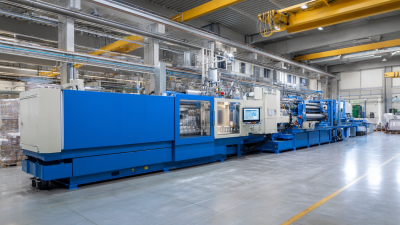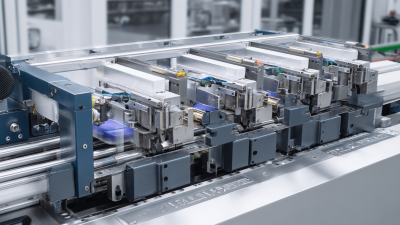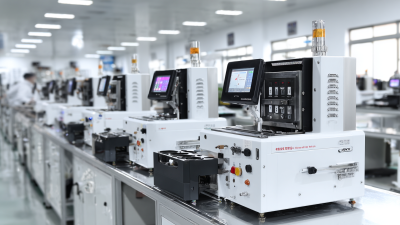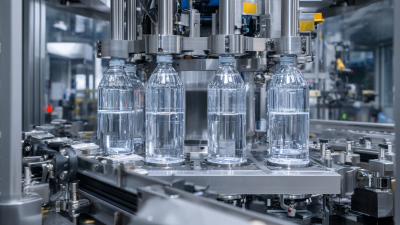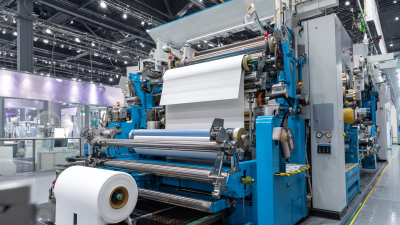Leave Your Message
In the rapidly evolving landscape of manufacturing and distribution, optimizing efficiency is crucial for businesses striving to maintain a competitive edge. As industries increasingly shift towards automation, the demand for advanced machinery has surged. According to the latest industry report by Smithers Pira, the global packaging machinery market is projected to reach $56.3 billion by 2025, driven by technological advancements and the growing trend towards e-commerce. It highlights that investing in a state-of-the-art machine for packaging not only enhances production rates but also improves product safety and reduces labor costs.
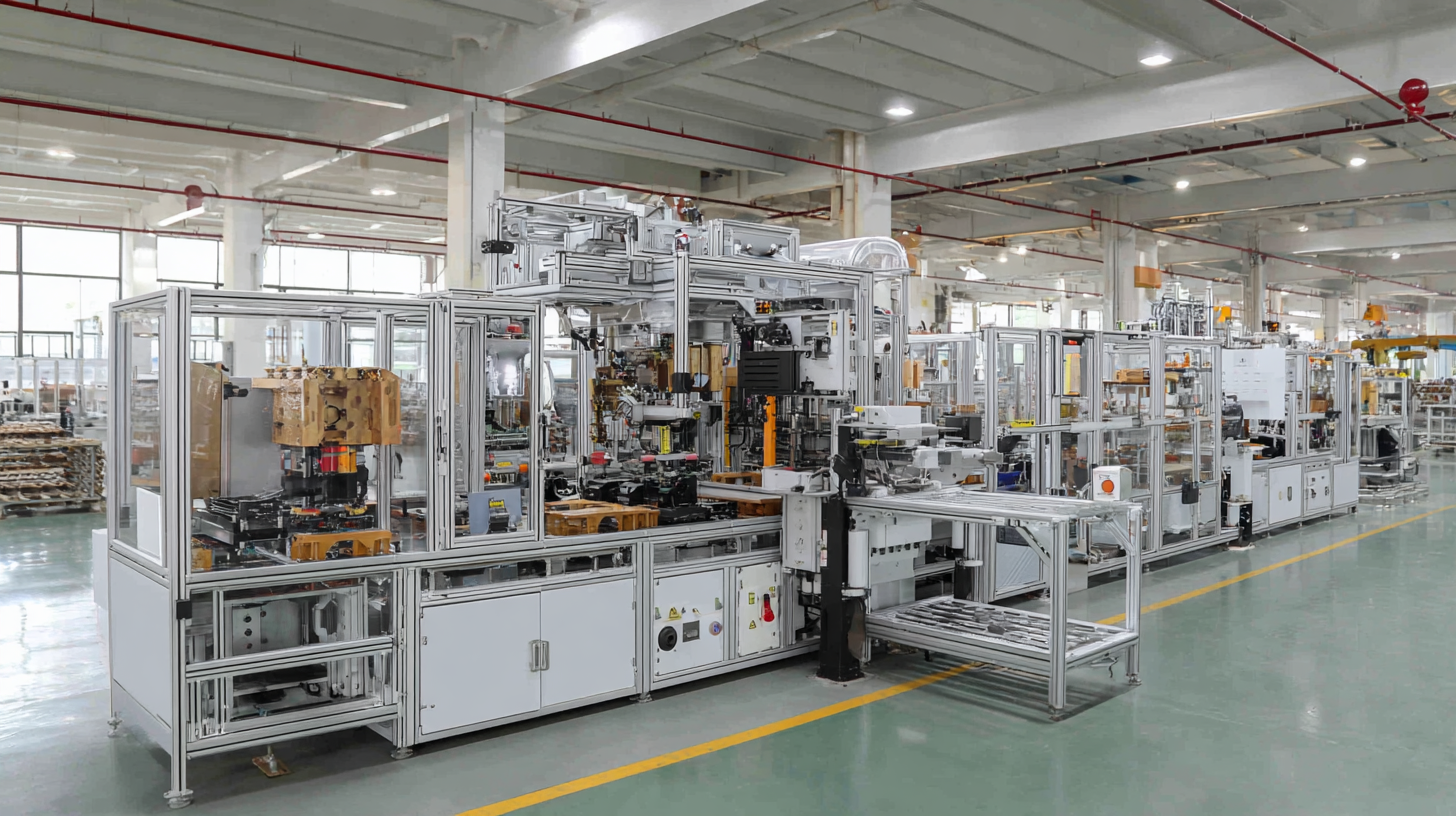
Moreover, the rise of sustainability practices emphasizes the importance of innovative packaging solutions. Research from Statista indicates that over 70% of consumers are willing to pay more for sustainable packaging options, prompting manufacturers to adopt eco-friendly practices that align with consumer preferences. By integrating cutting-edge machines for packaging, companies can meet these environmental standards while boosting their operational efficiency.
This guide presents the "2025 Top 10 Best Machines for Packaging" that can significantly enhance productivity and sustainability in your business operations, paving the way for a more successful future.
When selecting the right packaging machine for your business, it's crucial to clearly identify your specific needs. Consider the type of products you package, their size, and the required speed. For instance, if you are focusing on perishable goods, a machine with advanced sealing technology may be essential to extend shelf life. Conversely, bulk items might require a different approach, prioritizing ease of use over intricate features.
Tips: Analyze your production volume and frequency to choose a machine that accommodates your business scale. Additionally, factor in the versatility of the equipment; machines that can handle various products and packaging styles can save time and reduce costs in the long run.
Another important aspect is the integration of the packaging machine into your existing production line. Ensure that it complements your workflow and can be easily operated by your team. Compatibility with other equipment and ease of maintenance are also key factors that affect efficiency.
Tips: Consult with suppliers to understand the training requirements for your staff and the ongoing support they provide. Investing in a reliable machine with excellent customer service can greatly enhance your operational efficiency.

In today's competitive landscape, the right packaging machine can significantly enhance operational efficiency across various industries. According to a report by MarketsandMarkets, the global packaging machinery market is projected to reach USD 50 billion by 2025, growing at a CAGR of 5.7%. This growth is largely driven by advancements in packaging technology and increasing demand for automated solutions. Companies involved in food, pharmaceuticals, and consumer goods are particularly focusing on modernizing their packaging processes to improve productivity and reduce costs.
Different industries utilize specific types of packaging machines to meet their unique requirements. For instance, the food packaging sector often employs vertical form-fill-seal machines, which not only ensure strong seals for freshness but also enhance speed and efficiency in production lines. In pharmaceuticals, automatic labeling and blister packaging machines are essential for compliance with regulatory standards and for maintaining product integrity. The versatility of packaging machines allows businesses to adapt quickly to changing market demands, with a recent study indicating that automation can lead to a 20-30% reduction in packaging costs while increasing throughput, highlighting the integral role of packaging technology in boosting business efficacy.
Evaluating machine features is crucial for enhancing efficiency and productivity in packaging operations. When selecting the best machines for packaging, businesses should focus on several key attributes, including automation capabilities, speed, ease of integration with existing systems, and the versatility of package types. Advanced machines often come equipped with AI technology that optimizes workflows, potentially leading to significant reductions in waste and operational costs. For instance, features like predictive maintenance ensure that the machinery remains in optimal condition, thus reducing downtime and increasing output.
Furthermore, the integration of AI in packaging machinery not only streamlines processes but also enables real-time data analytics. By monitoring machine performance continuously, companies can identify bottlenecks and inefficiencies, allowing for quick adjustments to enhance productivity. Moreover, as organizations aim to harness the full potential of AI, fostering an environment that encourages employee engagement will complement technological advancements. A well-rounded approach, combining cutting-edge machinery and a motivated workforce, is essential for achieving peak efficiency in packaging operations.
Investing in packaging machines is a strategic move that can significantly enhance business efficiency. As industries adapt to changing market conditions, budgeting for advanced technology becomes imperative. The 2026 Manufacturing Industry Outlook suggests that businesses that focus on targeted technology investments are more likely to maintain a competitive edge. High-quality packaging machines not only streamline production processes but also minimize waste and improve product quality, leading to long-term gains.
Tips for budgeting: First, assess the total cost of ownership, including maintenance and operational costs, not just the initial purchase price. Second, research potential government incentives or grants available for purchasing innovative machinery, as these can provide substantial savings. Lastly, consider the return on investment (ROI) by calculating how many additional sales and efficiencies the new machine can achieve over a set period.
Being proactive in budget planning can also help businesses leverage new financial opportunities revealed in recent economic discussions. For instance, the 2025 Canadian Federal Budget emphasizes investments in science and technology, which may signal a favorable climate for businesses aiming to upgrade their infrastructure. By understanding the implications of current economic policies, companies can make informed decisions that contribute to their long-term success in the packaging sector.
| Machine Type | Price Range ($) | Speed (Packages/Min) | Dimensions (L x W x H, cm) | Primary Material | Power Consumption (W) |
|---|---|---|---|---|---|
| Automatic Carton Sealer | $2,000 - $5,000 | 20 - 40 | 150 x 80 x 120 | Metal | 450 |
| Vertical Form Fill Seal Machine | $5,000 - $15,000 | 30 - 120 | 200 x 100 x 180 | Plastic | 700 |
| Labeling Machine | $1,500 - $4,000 | 50 - 200 | 120 x 60 x 100 | Metal & Plastic | 300 |
| Horizontal Flow Wrapper | $10,000 - $25,000 | 40 - 150 | 250 x 120 x 150 | Plastic | 800 |
| Pallet Wrapper | $3,000 - $8,000 | 20 - 30 | 190 x 90 x 210 | Metal | 500 |
| Shrink Wrapping Machine | $2,500 - $6,000 | 25 - 70 | 130 x 80 x 120 | Plastic | 600 |
| Box Erector | $10,000 - $20,000 | 30 - 100 | 200 x 100 x 150 | Metal | 900 |
| Filling Machine | $5,000 - $15,000 | 20 - 80 | 160 x 90 x 140 | Metal | 750 |
| Stretch Wrapper | $4,000 - $10,000 | 15 - 25 | 180 x 95 x 210 | Metal | 400 |
| Coding & Marking Machine | $1,000 - $5,000 | 50 - 100 | 100 x 50 x 60 | Plastic | 250 |
Implementing packaging machines in your business requires careful consideration and ongoing maintenance to ensure they operate at peak efficiency. According to a report by Smithers Pira, the global packaging machinery market is projected to reach $55 billion by 2024, emphasizing the importance of technology in enhancing productivity. To achieve optimal performance, businesses must prioritize regular servicing and calibration of their packaging machines. This includes checking mechanical components, updating software, and ensuring that the materials used are compatible with the equipment.

Tips: Regular training for staff on the operation and maintenance of machinery can significantly reduce errors and downtime. According to IndustryWeek, companies that invest in employee training see productivity increases of up to 20%. Additionally, tracking machine performance and maintenance schedules through digital management systems can help anticipate issues before they cause major setbacks.
Ensuring that your packaging machines are properly maintained also extends their lifespan, reducing overall costs. Research indicates that a well-maintained machine can operate 20-50% more efficiently than a neglected one. By establishing a proactive maintenance schedule and keeping up with industry advancements, businesses can enhance their operational efficiency and maintain a competitive edge in the packaging sector.
